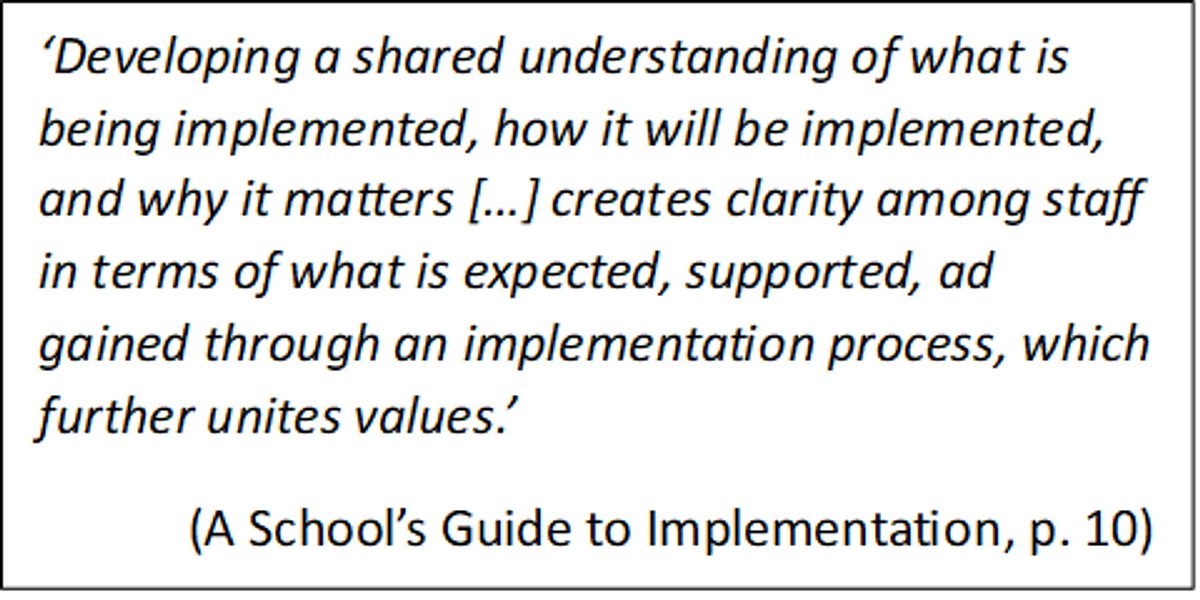The EEF recently published an updated version of its School’s Guide to Implementation. Where the previous edition focused on the implementation process (Explore, Prepare, Deliver and Sustain), this update draws on a new review of the evidence to provide additional guidance about the social processes and behaviours that underpin effective implementation.
As our CEO Professor Becky Francis states in the foreword to the updated guidance, ‘much can be achieved by improving how people work together during implementation.’
The first recommendation is to adopt the behaviours that drive effective implementation:

Phil Stock, Director of Greenshaw Research School, explores some of the nuances of what we mean by ‘engaging’ people in his blog, ‘Engage and unite: moving beyond buy-in.’ In this blog, we’re thinking about what ‘uniting’ people might look like.
The evidence indicates that poor implementation can often be traced to differing values, understanding and practices among staff. If the intended practice or change is not clearly understood, and if all staff involved do not understand their role within it, there is likely to be ambiguity or inaction because people do not understand the what, the how, the why, or the importance their small part has within the overall strategy.
At WISE Academies, Paula Stones, the Trust Attendance and Safeguarding Lead, has focused on uniting all staff around the importance of improving and maintaining pupil attendance.
The key message is that ‘attendance is everyone’s business.’ Through a series of regular communications to all staff, groups and individuals, Paula connects everyone to the parts they all play in supporting attendance, especially where their remits aren’t explicitly or obviously linked to attendance.

For example, the kitchen team are reminded of how essential their role is in providing a tasty, nutritious meal for pupils, some of whom will be relying on them for their only substantial meal of the day: for those pupils, perhaps the welcome of the catering staff and the meal they provide is a key factor getting them into a school.
The cleaning team and site supervisors are thanked for keeping the school environments attractive, clean and safe so that they are places pupils want to spend time in.
School attendance leads and designated safeguarding leads are prompted to check different aspects of their data, systems and family communications.
And everyone is reminded of the impact a warm welcome and friendly smile can have, and how much they matter as a ‘safe person’ for individual children.
Crucially, this is not a one-off communication from Paula, but an ongoing effort to remind, nudge and celebrate the way in which everyone contributes to the shared goal of ensuring pupils are in school as much as possible, and that systems to identify, analyse and address absence are working as they should. Sitting within an overall strategy for attendance, this action unites all staff in their understanding of what they should be doing, how it contributes to the bigger picture, and why it matters to their pupils and families.
You might also be interested in…
The EEF’s new and updated guide to effective implementation: what’s changed? – An EEF blog by the authors of the updated guidance, outlining the main contents and changes.
A School’s Guide to Implementation – The updated guidance report, with additional tools to support school leaders.
